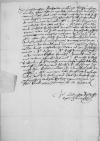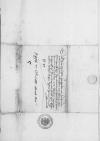List #5185
Ioannes DANTISCUS do Albrecht I von Hohenzollern-AnsbachCracow (Kraków), 1537-01-22
Rękopiśmienne podstawy źródłowe:
Pomocnicze podstawy źródłowe:
Publikacje:
| ||||||||||||
Tekst + aparat krytyczny + komentarz Zwykły tekst Tekst + komentarz Tekst + aparat krytyczny
Dem durchlauchten, hochgebornen furstennn und herrn, herrn
Durchlauchter, hochgeborner furst, hochgunstiger, lieber herr. / Mein willige, freuntliche dienst zu vorann. /
Ich hab nicht mocht noch lossen, / Ewer Furstlichen Durchlaucht mit dissem meynemm schreiben zu besuchen / und do mit meiner zu gedencken Ewer Durchlaucht zu erinneren, nemlich in dem, das ich hie Ewer Durchlaucht gernn fruntlich und nuczlich heth wold dinenn, / wie ich dan ouch etwan, wor es stelle und zceit hot gehabt, / gethonn, ouch was mir muglich noch gern thun wil. / Es sein aber hie solche hendel vorhandenn, / die wunderlich zu ghen. / Muss mich derwegen ouch in gemeynen des
Datum

